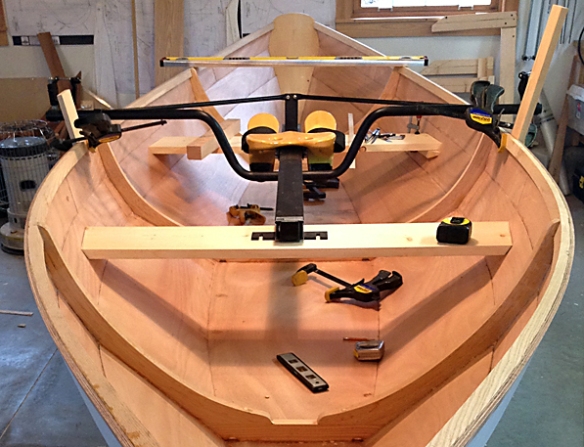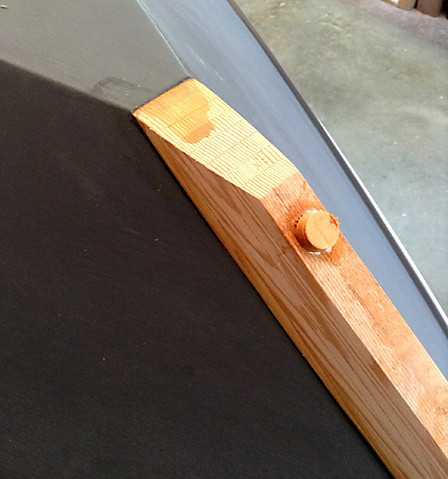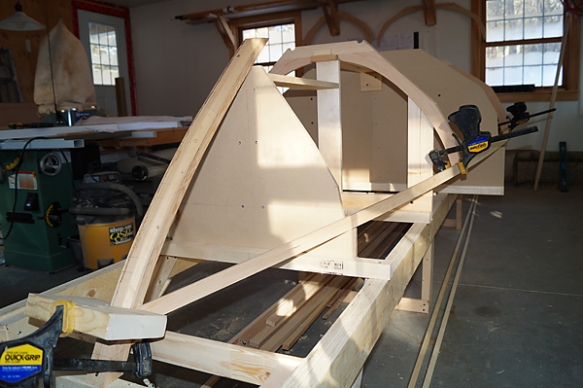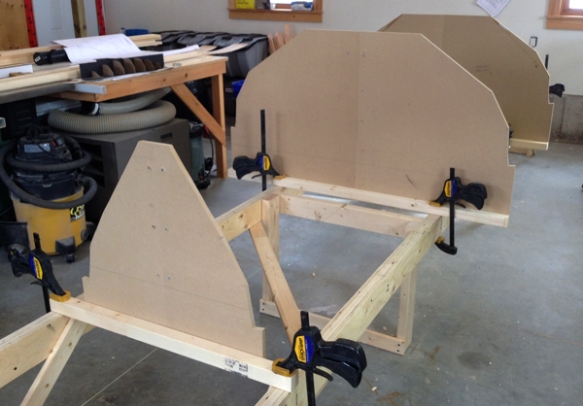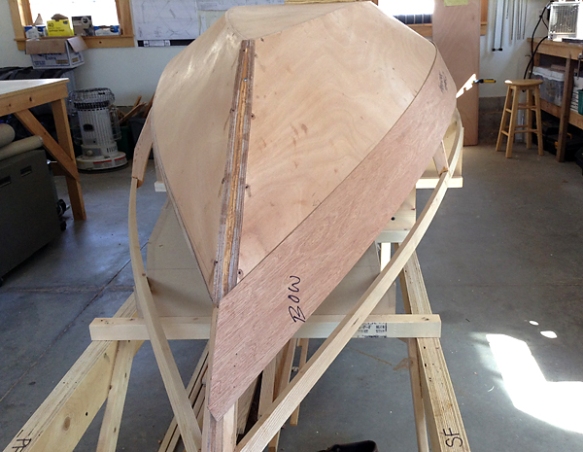
Pattern for the second plank
Once the full size plank patterns are made, the marine ply is cut into strips, 16” for garboards and 8” for the other two planks. The patterns are layed over top of the strips to determine the angles for the dog-leg scarfs. A power plane or jack plane is used to take off the bulk of the wood, followed by a sharp low-angle block plane. Planing the scarfs to a feather edge, without tearing out, is especially difficult with the paper-thin outer veneers on today’s marine plywood.
Small finishing nails are driven through the joints on each side to keep the pieces aligned when clamping. The garboards and middle planks required only one joint each but the sheerstrakes needed two scarfs each to make up the required length.
Channel blocks, the width of the scarf, are clamped top and bottom giving even pressure on both sides of the joint and they also allow the alignment nails to stay in place while clamping.

Ready for gluing. Note: holes for registration nails.

Scarf joint clamped using channels blocks
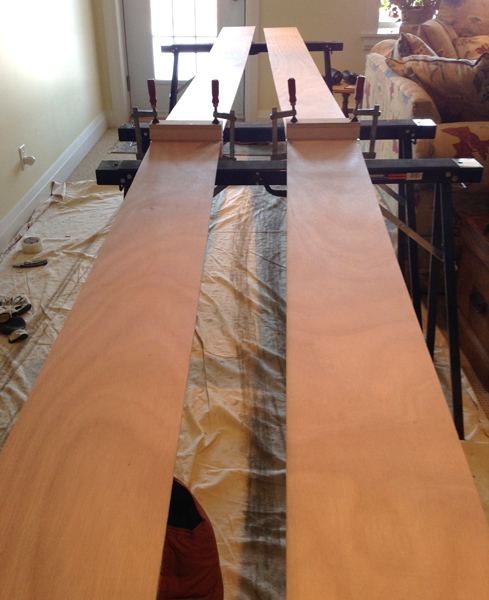
Dog legs






